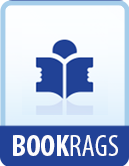3. Printed copies which have been purchased may be edited or simplified provided that the fundamental character of the work is not distorted or the lyrics, if any, altered or lyrics added if none exist.
4. A single copy of recordings of performances by students may be made for evaluation or rehearsal purposes and may be retained by the educational institution or individual teacher.
5. A single copy of a sound recording (such as a tape, disc or cassette) of copyrighted music may be made from sound recordings owned by an educational institution or an individual teacher for the purpose of constructing aural exercises or examinations and may be retained by the educational institution or individual teacher. (This pertains only to the copyright of the music itself and not to any copyright which may exist in the sound recording.)
B. Prohibitions
1. Copying to create or replace or substitute for anthologies, compilations or collective works.
2. Copying of or from works intended to be “consumable” in the course of study or of teaching such as workbooks, exercises, standardized tests and answer sheets and like material.
3. Copying for the purpose of performance, except as in A(1) above.
4. Copying for the purpose of substituting for the purchase of music, except as in A(1) and A(2) above.
5. Copying without inclusion of the copyright notice which appears on the printed copy.
(iv) Discussion of Guidelines
The Committee appreciates and commends the efforts and the cooperative ancl reasonable spirit of the parties who achieved the agreed guidelines on books and periodicals and on music. Representatives of the American Association of University Professors and of the Association of American Law Schools have written to the Committee strongly criticizing the guidelines, particularly with respect to multiple copying, as being too restrictive with respect to classroom situations at the university and graduate level. However, the Committee notes that the Ad Hoc group did include representatives of higher education, that the stated “purpose of the . . . guidelines is to state the minimum and not the maximum standards of educational fair use” and that the agreement acknowledges “there may be instances in which copying which does not fall within the guidelines . . . may nonetheless be permitted under the criteria of fair use.”
The Committee believes the guidelines are a reasonable interpretation of the minimum standards of fair use. Teachers will know that copying within the guidelines is fair use. Thus, the guidelines serve the purpose of fulfilling the need for greater certainty and protection for teachers. The Committee expresses the hope that if there are areas where standards other than these guidelines may be appropriate, the parties will continue their efforts to provide additional specific guidelines in the same spirit of good will and give and take that has marked the discussion of this subject in recent months.




